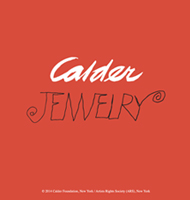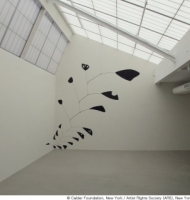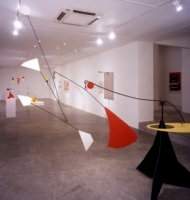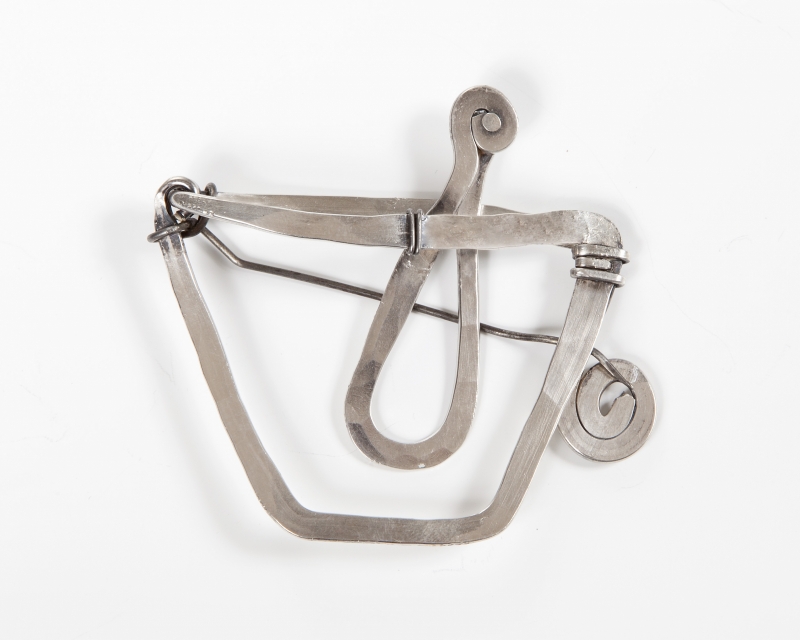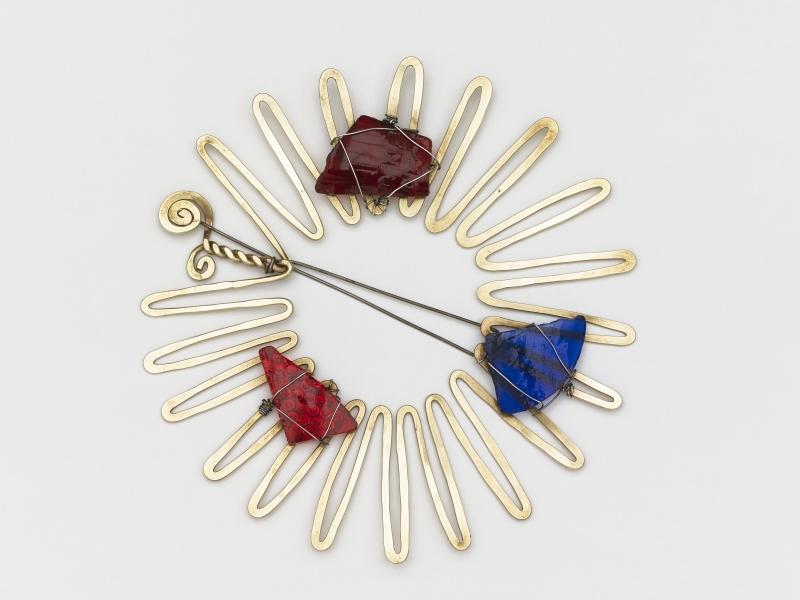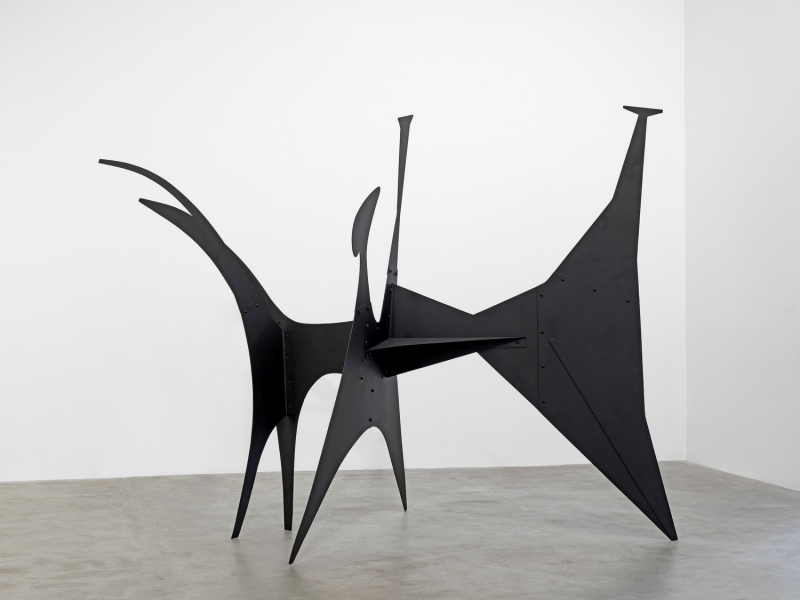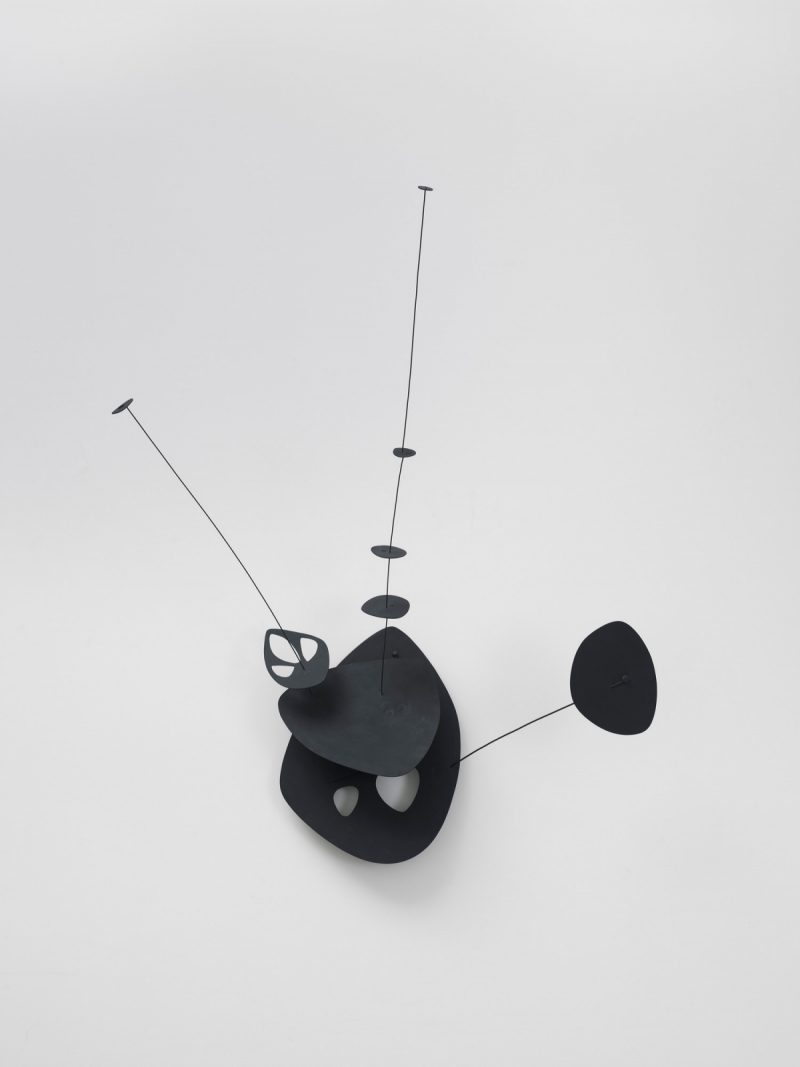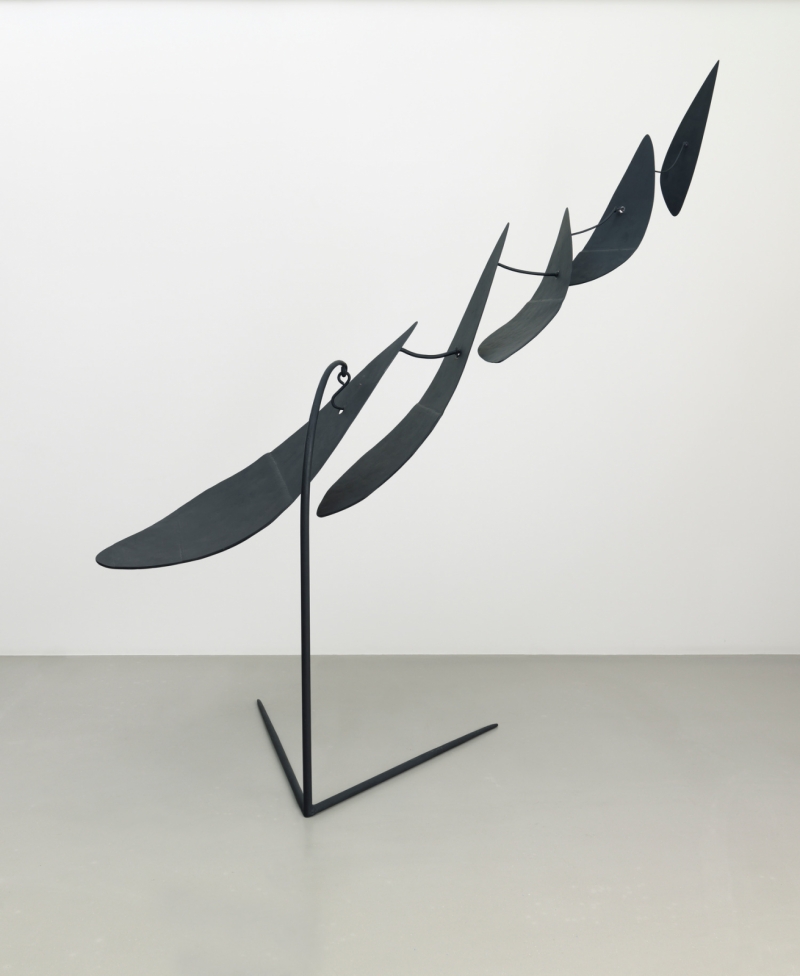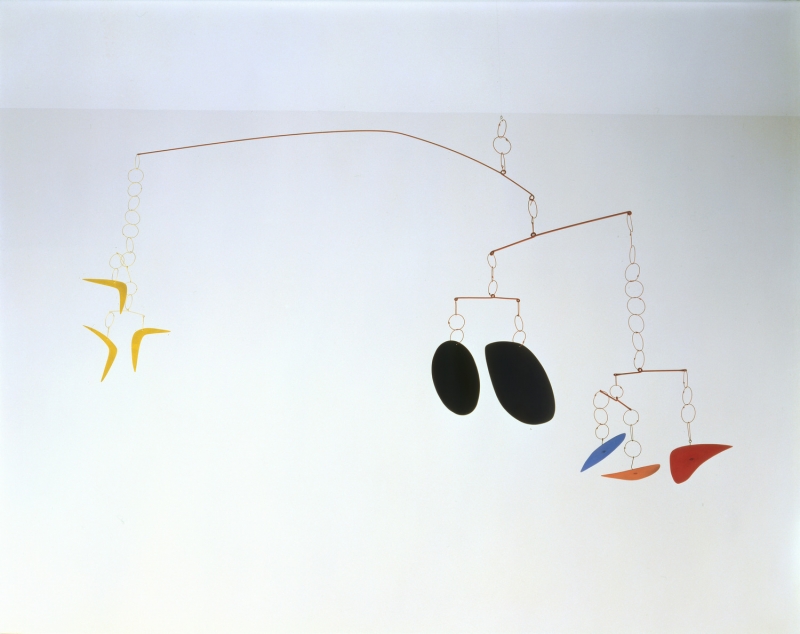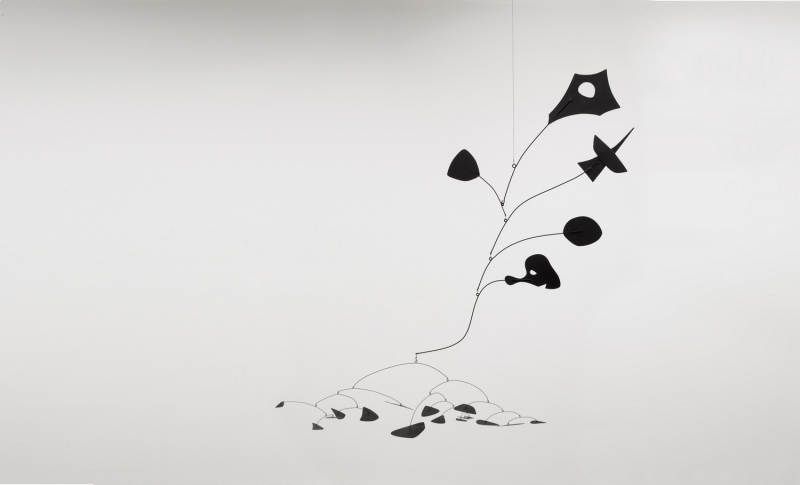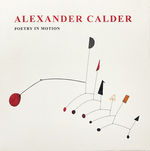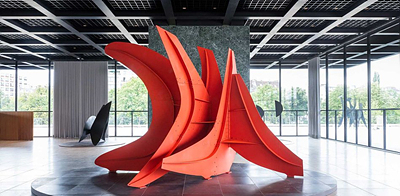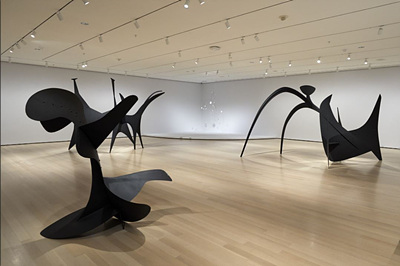 Alexander Calder | Media Coverage | KUKJE GALLERY
Alexander Calder | Media Coverage | KUKJE GALLERY
For a comprehensive chronology, see www.calder.org
BIOGRAPHY
Alexander Calder
(1898-1976)
Born in 1898, Lawnton, Pennsylvania, US
For a comprehensive chronology, see www.calder.org
22 July or August 1898
Calder is born in Lawnton, Pennsylvania, to Nanette Lederer Calder, a painter, and Alexander Stirling Calder, a sculptor. I always thought I was born—at least my mother always told me so—on August 22, 1898. But my grandfather Milne’s birthday was on August 23, so there might have been a little confusion. In 1942, when I wrote the Philadelphia City Hall for a birth certificate, I sent them a dollar and they told me I was born on the twenty-second of July, 1898. So I sent them another dollar and told them, “Look again.” They corroborated the first statement.
December 1909
For Christmas, Calder presents his parents with a dog and a duck that he trimmed from a brass sheet and bent into formation. The duck is kinetic, rocking back and forth when tapped.
October–December 1923
Calder begins classes at the Art Students League of New York, studying life and pictorial composition with John Sloan and portrait painting with George Luks. He studies at the League through December 1925.
Winter 1925
Calder makes hundreds of brush drawings of animals at the Bronx Zoo and the Central Park Zoo. The following year, Animal Sketching, a drawing manual written by Calder with reproductions of 141 of his brush drawings, is published by Bridgman Publishers in New York.
Fall 1926
Calder begins creating Cirque Calder, a complex and unique body of art. Fashioned from wire, fabric, leather, rubber, cork, and other materials, Cirque Calder is designed to be performed for an audience by Calder. It develops into a multi-act articulated series of mechanized sculpture in miniature scale, a distillation of the natural circus. Calder is able to travel with his easily transportable circus and hold performances on both continents. Over the next five years, Calder continues to develop and expand this work of performance art to fill five large suitcases.
Fall 1926
Calder makes his first formal wire sculptures, Josephine Baker I and Struttin’ His Stuff.
October 1930
Accompanied by another American artist, William “Binks” Einstein, Calder visits Mondrian’s studio at 26 rue du Départ. Already familiar with Mondrian’s geometric abstractions, Calder is deeply impressed by the studio environment. It was a very exciting room. Light came in from the left and from the right, and on the solid wall between the windows there were experimental stunts with colored rectangles of cardboard tacked on. Even the victrola, which had been some muddy color, was painted red. I suggested to Mondrian that perhaps it would be fun to make these rectangles oscillate. And he, with a very serious countenance, said: “No, it is not necessary, my painting is already very fast.” This one visit gave me a shock that started things. Though I had heard the word “modern” before, I did not consciously know or feel the term “abstract.” So now, at thirty-two, I wanted to paint and work in the abstract. And for two weeks or so, I painted very modest abstractions. At the end of this, I reverted to plastic work which was still abstract.
27 April–9 May 1931
Calder’s abstract work is presented for the first time in the exhibition “Alexandre Calder: Volumes–Vecteurs–Densités/Dessins–Portraits,” at Galerie Percier, Paris.
Fall 1931
Marcel Duchamp visits the studio at 14 rue de la Colonie again and sees Calder’s latest works. There was one motor-driven thing, with three elements. The thing had just been painted and was not quite dry yet. Marcel said, “Do you mind?” When he put his hands on it, the object seemed to please him, so he arranged for me to show in Marie Cuttoli’s Galerie Vignon, close to the Madeleine. I asked him what sort of a name I could give these things and he at once produced “Mobile.” In addition to something that moves, in French it also means motive. Duchamp also suggested that on my invitation card I make a drawing of the motor-driven object and print: CALDER/SES MOBILES.
After 12 February 1932
In response to Duchamp’s term “mobile,” Arp asks sarcastically, Well, what were those things you did last year [for Percier’s]—stabiles? Calder adopts “stabile” to refer to his static works.
August 1933
The Calders visit a real-estate agency in Danbury, Connecticut. After viewing several properties, they discover a dilapidated eighteenth-century farmhouse in Roxbury, Connecticut; both Louisa and Calder claim to have been the first to exclaim, “That’s it!”
23 February–13 March 1937
Calder’s first large-scale bolted stabiles, Devil Fish and Big Bird, are on view in “Calder: Stabiles & Mobiles” at the Pierre Matisse Gallery, New York.
May 1937
Calder and Miró visit the Spanish pavilion under construction at the 1937 World’s Fair site in Paris. Calder meets the pavilion’s architects, Josép Lluís Sert and Luis Lacasa. Sert eventually commissions Calder to make Mercury Fountain for the Spanish pavilion. Mined in Almadén in Spain, the mercury symbolizes Republican resistance to fascism.
3–25 December 1940
“Calder Jewelry” is presented at Willard Gallery, New York. In her press release for the show, Willard writes, These works of art are savage and deliberate and self-confidently sophisticated . . . This is a master modern artist’s contribution to the history of fashion. For a world already in chains it is superb stuff.
29 September 1943–16 January 1944
The Museum of Modern Art, New York, presents “Alexander Calder: Sculptures and Constructions,” curated by Sweeney and Duchamp. Calder writes, Simplicity of equipment and an adventurous spirit in attacking the unfamiliar or unknown are apt to result in a primitive and vigorous art. Somehow the primitive is usually much stronger than art in which technique and flourish abound. Originally scheduled to close on 28 November 1943, the exhibition is extended to 16 January 1944 due to public demand.
Before 3 July 1945
Calder produces a series of small-scale works, many from scraps trimmed during the making of other objects. Let’s mail these little objects to [Louis] Carré, in Paris, and have a show, Duchamp suggests when he sees them; by taking advantage of the newly available international airmail system, Duchamp’s action predates “mail art” by nearly two decades. Carré responds to Duchamp’s proposal. Interested show Calder miniatures would also gladly exhibit mobile sculptures available all sizes and colours.
14–19 June 1952
Calder represents the United States in the XXVI Biennale di Venezia. Sweeney installs the exhibition and writes a short text for the exhibition catalogue. Calder wins the Grand Prize for sculpture.
28 June 1952
Calder accepts the commission from Carlos Raúl Villanueva, whom he met through Sert in 1951, to design an acoustic ceiling for Aula Magna, the auditorium of the Universidad Central de Venezuela. He collaborates with the engineering firm Bolt, Beranek, and Newman, Cambridge, Massachusetts.
11 November 1953
The Calders visit Jean to see his renovated mill house in Saché. Calder agrees to a trade of three mobiles for François Premier, a dilapidated seventeenth-century stone house built adjoining a cliff on Jean’s property.
15 March 1957
The Committee of Art Advisors at UNESCO approves Calder’s maquette for a standing mobile. Titled Spirale, the mobile top is made by Calder at Segré’s Iron Works in Connecticut and the stabile bottom is made with the collaboration of Jean Prouvé in France.
27 March 1962
In a letter to Giovanni Carandente, Calder agrees to a proposal to make a sculpture for the Spoleto Festival in Italy. He decides to make “a stabile, which will stand on the ground, + arch the roadway.” His work results in Teodelapio, a monumental stabile, which is completed in August 1962.
6 November 1964–31 January 1965
Solomon R. Guggenheim Museum, New York, exhibits “Alexander Calder: A Retrospective Exhibition.” Thomas M. Messer curates the exhibition, which travels to St. Louis, Toronto, Milwaukee, and Des Moines.
14 June 1969
Calder attends the dedication ceremony for La Grande vitesse, a monumental stabile commissioned by the city of Grand Rapids, Michigan, in August 1967. This is the first sculpture to be funded by the public art program of the National Endowment for the Arts (NEA).
14 October 1976–6 February 1977
The Whitney Museum of American Art, New York, with Jean Lipman as curator, exhibits “Calder’s Universe,” a major retrospective. The exhibition travels to fifteen cities throughout the United States and Japan.
11 November 1976
Calder dies in New York City at the home of his daughter Mary.
Selected Solo Exhibitions
For a comprehensive list of exhibitions and publications, see www.calder.org
2021
Alexander Calder: Modern from the Start, The Museum of Modern Art, New York, US
2018
Alexander Calder: Theater of Encounters, Fundación Proa, Buenos Aires, Argentina
Alexander Calder: Radical Inventor, Montreal Museum of Fine Arts, Quebec, Canada
2017
Calder: Hypermobility, Whitney Museum of American Art, New York, US
Calder: Forgeron des géantes libellules, Musée Soulages, Rodez, France
2015
Calder: Discipline of the Dance, Museo Jumex, Mexico City, Mexico
Alexander Calder: Retrospective, Pushkin Museum, Moscow, Russia
Alexander Calder: Performing Sculpture, Tate Modern, London, UK
2014
Alexander Calder at the Rijksmuseum, Rijksmuseum, Amsterdam, The Netherlands
Calder: Jewelry, Kukje Gallery, Seoul, Korea
2013
Calder, Leeum, Samsung Museum of Art, Seoul, Korea
Alexander Calder: Avant-Garde in Motion, Kunstsammlung Nordrhein-Westfalen, Düsseldorf, Germany
Calder and Abstraction: From Avant-Garde to Iconic, Los Angeles County Museum of Art, California, US
2012
Alexander Calder: De grote ontdekking, Gemeentemuseum, The Hague, The Netherlands
Calder Noir, Kukje Gallery, Seoul, Korea
2011
Calder's Portraits: A New Language, National Portrait Gallery, Smithsonian Institution, Washington, D.C., US
2009
Alexander Calder: A Balancing Act, Seattle Art Museum, Washington, US
Calder: Sculptor of Air, Palazzo delle Esposizioni, Rome, Italy
2008
Calder Jewelry, Norton Museum of Art, West Palm Beach, Florida, US
Alexandre Calder en Touraine, Château de Tours, France
Alexander Calder: The Paris Years, 1926–1933, Whitney Museum of American Art, New York, US
2006
Calder no Brasil, Pinacoteca do Estato de São Paulo, Brazil
2005
The Surreal Calder, Menil Collection, Houston, US
2004
Calder: Poetry in Motion, Kukje Gallery, Seoul, Korea
2003
Calder: Gravedad y la Gracia, Fundación del Museo Guggenheim Bilbao, Spain
2001
Grand Intuitions: Calder’s Monumental Sculpture, Storm King Art Center, Mountainville, New York, US
2000
Calder in Connecticut, Wadsworth Atheneum, Hartford, Connecticut, US
Alexander Calder: Motion and Color, Iwaki City Art Museum, Japan
1998
Alexander Calder: 1898–1976, National Gallery of Art, Washington, D.C., US
1997
Flying Colors: The Innovation and Artistry of Alexander Calder, San Jose Museum of Art, California, US
Calder, Fundacío Joan Miró, Barcelona, Spain
1995
Alexander Calder: Retrospective, Louisiana Museum of Modern Art, Humlebaek, Denmark
1993
Calder: Mobiles, stabiles, gouaches, bijoux . . ., Musée Picasso, Château Grimaldi, Antibes, France
1991
Celebrating Calder, Whitney Museum of American Art, New York, US
1989
Calder Intime, Musée des Arts Décoratifs, Paris, France
1986
Alexander Calder: An American Invention, Sheldon Memorial Art Gallery, University of Nebraska, Lincoln, US
1983
Calder: Mostra retrospettiva, Palazzo a Vela, Turin, Italy
1976
Calder's Universe, Whitney Museum of American Art, New York, US
1975
Calder, Haus der Kunst, Munich, Germany
1974
Alexander Calder: A Retrospective Exhibition, Work from 1925–1974, Museum of Contemporary Art, Chicago, Illinois, US
1973
Alexander Calder: Retrospektive, Galerie Maeght, Zurich, Switzerland
1972
Calder's Circus, Whitney Museum of American Art, New York, US
1970
A Salute to Alexander Calder, The Museum of Modern Art, New York, US
1969
Calder, Fondation Maeght, Saint-Paul-de-Vence, France
1967
Calder: 19 Gifts from the Artist, The Museum of Modern Art, New York, US
1964
Alexander Calder: A Retrospective Exhibition, Solomon R. Guggenheim Museum, New York, US
1962
Alexander Calder: Sculpture–Mobiles, Arts Council of Great Britain, Tate Gallery, London, UK
1959
Alexander Calder, Stabilen, Mobilen, Stedelijk Museum, Amsterdam, The Netherlands
1957
Alexander Calder, Kunsthalle Basel, Basel, Switzerland
1956
Calder, Perls Galleries, New York, US
1955
Exposiciòn Calder, Museo de Bellas Artes, Caracas, Venezuela
1953
Alexander Calder Mobiles, Walker Art Center, Minneapolis, US
II Bienal do Museu de Arte Moderna de São Paulo, Museu de Arte Moderna, São Paulo, Brazil
1952
Alexander Calder: Gongs and Towers, Curt Valentin Gallery, New York, US
1950
Calder: Mobiles & Stabiles, Galerie Maeght, Paris, France
Calder, New Gallery, Charles Hayden Memorial Library, Massachusetts Institute of Technology, Cambridge, US
1948
Alexander Calder, Ministerio da Educaçao e Saude, Rio de Janeiro, Brazil
1946
Alexander Calder: Mobiles, Stabiles, Constellations, Galerie Louis Carré, Paris, France
1944
Recent Work by Alexander Calder, Buchholz Gallery/Curt Valentin, New York, US
1943
17 Mobiles by Alexander Calder, Addison Gallery of American Art, Andover, Massachusetts, US
Alexander Calder: Sculptures and Constructions, The Museum of Modern Art, New York, US
1941
Mobiles by Alexander Calder, Stabiles and Jewelry, San Francisco Museum of Art, California, US
1940
Calder Jewelry, Willard Gallery, New York, US
1938
Calder Mobiles, George Walter Vincent Smith Gallery, Springfield, Massachusetts, US
1937
Calder: Mobiles and Stabiles, The Mayor Gallery, London, UK
1935
Mobiles by Alexander Calder, The Renaissance Society at The University of Chicago, Illinois, US
1934
Mobiles by Alexander Calder, Pierre Matisse Gallery, New York, US
1932
Calder: ses mobiles, Galerie Vignon, Paris, France
Calder: Mobiles/Abstract Sculptures, Julien Levy Gallery, New York, US
1931
Alexandre Calder: Volumes–Vecteurs–Densités/Dessins–Portraits, Galerie Percier, Paris, France
1929
Sculptures bois et fil de fer de Alexander Calder, Galerie Billiet-Pierre Vorms, Paris, France
Alexander Calder: Skulpturen aus Holz und aus Draht, Galerie Neumann-Nierendorf, Berlin, Germany
Alexander Calder: Paintings, Wood Sculpture, Toys, Wire Sculpture, Jewelry, Textiles, Fifty-Sixth Street Galleries, New York, US
1928
Wire Sculpture by Alexander Calder, Weyhe Gallery, New York, US
1927
The Galleries of Jacques Seligmann and Company, Paris, France
Selected Group Exhibitions
2019
Calder-Picasso, Musée national Picasso-Paris, Paris, France
2016
Alexander Calder & Fischli/Weiss, Fondation Beyeler, Riehen/Basel, Switzerland
Calder and Brazilian Art, Itaú Cultural, São Paulo, Brazil
2015
Calder Lightness; Richard Tuttle Wire Pieces; Fred Sandback 64 Three–Part Pieces, Pulitzer Arts Foundation, St. Louis, Missouri, US
Marvelous Objects: Surrealist Sculpture from Paris to New York, Hirshhorn Museum and Sculpture Garden, Smithsonian Institution, Washington D.C, US
2013
Le Surréalisme et l'objet, Musée National d'Art Moderne, Centre Georges Pompidou, Paris, France
2007
Kukje Gallery: 25 Years, Kukje Gallery, Seoul, Korea
2004
Calder–Miró, Fondation Beyeler, Riehen/Basel, Switzerland
1993
Picasso and the Age of Iron, Solomon R. Guggenheim Museum, New York, US
1968
The Machine as Seen at the End of the Mechanical Age, The Museum of Modern Art, New York, US
1953
Alexander Calder: Mobiles/Naum Gabo: Kinetic Constructions and Constructions in Space, Wadsworth Atheneum, Hartford, US
1952
XXVI Biennale di Venezia, Venice, Italy
1949
Third International Exhibition of Sculpture, Philadelphia Museum of Art in collaboration with Fairmount Park Art Association, Philadelphia, US
1947
Alexander Calder/Fernand Léger, Stedelijk Museum, Amsterdam, The Netherlands
1942
First Papers of Surrealism, Coordinating Council of French Relief Societies, Whitelaw Reid Mansion, New York, US
1936
Cubism and Abstract Art, The Museum of Modern Art, New York, US
Fantastic Art, Dada, Surrealism, The Museum of Modern Art, New York, US
Selected Awards
1977
Presidential Medal of Freedom
The Goslar Kaiserring Award for Modern Art
1975
Honorary Fellow, Royal Academy of Fine Arts, The Hague
United Nations Peace Medal
1974
Commandeur de la Légion d'honneur
Citoyen d’Honneur, City of Saché
Official Mayoral Decree of “Alexander Calder Day in Chicago” for 25 October; Honorary Citizen of Chicago
Le Grand Prix National des Arts
1971
Gold Medal for Sculpture, American Academy of Arts and Letters and the National Institute of Arts and Letters
1970
University of California, Honorary Doctorate
University of Glasgow, Honorary Degree, Doctor of Laws
1969
Stevens Institute of Technology, Honorary Degree, Doctor of Engineering
Key to the City of Grand Rapids, Michigan
1966
Harvard University, Honorary Degree, Doctor of Arts
1964
Elected to American Academy of Arts and Letters
1963
President’s Medal, The Art Directors Club of New York
1962
Art in America Annual Award for an Outstanding Contribution to American Art
Creative Arts Awards, Sculpture Medal, Brandeis University
1968
Officier de la Légion d’honneur
1961
Fine Arts Gold Medal for Master of Sculpture, The American Institute of Architects
1960
Elected to National Institute of Arts and Letters
Gold Medal of Honor in Sculpture, Architectural League of New York
1952
Grand Prize for Sculpture, XXVI Biennale di Venezia
Selected Public and Private Collections
Art Institute of Chicago
University of California, Berkeley Art Museum & Pacific Film Archive
Centre Pompidou, Musée national d'art moderne, Paris
Hirshhorn Museum and Sculpture Garden, Smithsonian Institution, Washington, D.C.
Moderna Museet, Stockholm
Museum of Contemporary Art, Chicago
The Museum of Modern Art, New York
National Gallery of Art, Washington, D.C.
Peggy Guggenheim Collection, Venice
Philadelphia Museum of Art
Leeum, Samsung Museum of Art, Seoul
San Francisco Museum of Modern Art
Smithsonian American Art Museum, Washington, D.C.
Solomon R. Guggenheim Museum, New York
Whitney Museum of American Art, New York
Yale University Art Gallery, New Haven
Selected Monographs
Sweeney, James Johnson. Alexander Calder. New York: Museum of Modern Art, 1951.
Calder, Alexander, and Jean Davidson, ed. Calder: An Autobiography with Pictures. New York: Pantheon Books, 1966.
Arnason, H. Harvard, and Pedro E. Guerrero. Calder. New York: D. Van Nostrand, 1966.
Calder, Alexander, James Johnson Sweeney, and Daniel Lelong. Calder, l'artiste et l'oeuvre. Archives Maeght, no. 1. Paris: Maeght Editeur, 1971.
Arnason, H. Harvard, and Ugo Mulas. Calder. New York: Viking Press, 1971.
Bruzeau, Maurice. Calder à Saché. Paris: Éditions Cercle d'Art, 1975.
Hayes, Margaret Calder. Three Alexander Calders, A Family Memoir. Middlebury, Vt.: Paul S. Eriksson, 1977.
Pierre, Arnauld. Calder: La sculpture en mouvement. Paris: Découvertes Gallimard/Paris-Musées, 1996.
Carandente, Giovanni. Teodelapio: Alexander Calder. Milan: Edizioni Charta, 1996.
Rower, Alexander S. C. Calder Sculpture. New York: Universe, 1998.
Guerrero, Pedro E. Calder at Home: The Joyous Environment of Alexander Calder. New York: Stewart, Tabori & Chang, 1998.
Stern, H. Peter, David R. Collens, and Alexander S. C. Rower. Calder: Storm King Art Center. Mountainville, N.Y.: Storm King Art Center, 2003.
Calder Jewelry. Edited by Alexander S. C. Rower and Holton Rower. New York: Calder Foundation, 2007.
Mulas, Ugo, Alexander Calder, and Giulio C. Argan. Ugo Mulas/Alexander Calder. Milan: Officina Libraria, 2008.
Pierre, Arnauld. Calder: Mouvement et Réalité. Paris: Éditions Hazan, 2009.
Calder by Matter. Edited by Alexander S. C. Rower. Paris: Cahiers d'Art, 2013.
“Calder in France.” Cahiers d’Art, no. 1 (2015). Edited by Alexander S. C. Rower.
Perl, Jed. Calder: The Conquest of Time: The Early Years: 1898–1940. New York: Alfred A. Knopf, 2017.
EXHIBITIONS
|
Calder Jewelry Jul 10, 2014 - Aug 17, 2014 |
Calder Noir Jul 12, 2012 - Aug 17, 2012 |
|
|
Alexander Calder Dec 18, 2003 - Feb 27, 2004 |
ARTWORKS
|
Alexander Calder (1898-1976) © ARS, NY, Mortar and Pestle brooch, c. 1955, silver and steel wire, 6.4 x 7.6 cm. |
Alexander Calder (1898-1976) © ARS, NY, Brooch, c. 1938, brass wire, glass, and steel wire, 17.1 x 17.8 cm. |
|
|
Alexander Calder (1898-1976) © ARS, NY, Black Beast, 1940, sheet metal, bolts, and paint, 261.6 x 414 x 199.4 cm. |
Alexander Calder (1898-1976) © ARS, NY, Escutcheon, 1954, sheet metal, wire, and paint, 114.3 x 88.9 x 73.7 cm. |
|
|
Alexander Calder (1898-1976) © ARS, NY, Black Mobile with Hole, 1954, sheet metal, wire, and paint, 223.5 x 243.8 cm. |
Alexander Calder (1898-1976) © ARS, NY, Black Petals, 1939, sheet metal, rod, and paint, 213.4 x 221 x 86.4 cm. |
|
|
Alexander Calder (1898-1976) © ARS, NY, Boomerangs, 1941, sheet metal, wire, and paint. 114.3 x 297.2 cm. |
Alexander Calder (1898-1976) © ARS, NY, Bosquet is the Best Best, 1946, sheet metal, wire, and paint, 205.7 x 185.4 x 114.3 cm. |
|
|
Alexander Calder (1898-1976) © ARS, NY, The New Ritou, c. 1948, sheet metal, wood, rod, string, and paint, 68.6 x 53.3 x 22.9 cm. |
